Engaging disengaged readers at the Financial Times
EngagementHabit formationB2C
Role & Company
I lead the product design as part of the FT’s Engagement team alongside a PM, a Business Analyst, a User Researcher and 4 engineersSummary
We experimented with 3 new features to help disengaged readers get more value from their subscription. Those who use 1 or more of the features are 20% more likely to become ‘engaged’. Those who arrive on the improved article page are 5% more likely to follow a topic.Jump to the screens → Jump to the methodolgy →

Problem
Those who don’t read cancel their subscription
The cost of acquiring a new customer can be anywhere between five and 25 times more expensive than retaining an existing one. We know that those who pay for the FT but don’t use it are much more likely to cancel their subscription.
How might we ensure that those who pay for the FT use it, value it and stay subscribed?
Opportunity
Disengaged readers have unique behaviours
We used data analysis and qualitative feedback from a survey to better understand disengaged subscribers. We learned that disengaged subscribers:
-
Arrive at an article page more often than engaged users
-
Over index in desktop use and under index in app use
-
Often ignore emails and newsletters and can find them annoying
-
Expect relevant news to find them
- Are less familiar with personalization features like myFT




Solution
Meeting disengaged readers where they are
Using this research, I facilitated 2 rounds of ideation workshops with the team and stakeholders. We came up with more than 40 ideas and chose to test 3 that we agreed were low-effort/high-impact:
- In article myFT onboarding
- In article myFT recommendations (AB testing copy)
- Hyper-localized homepage slice
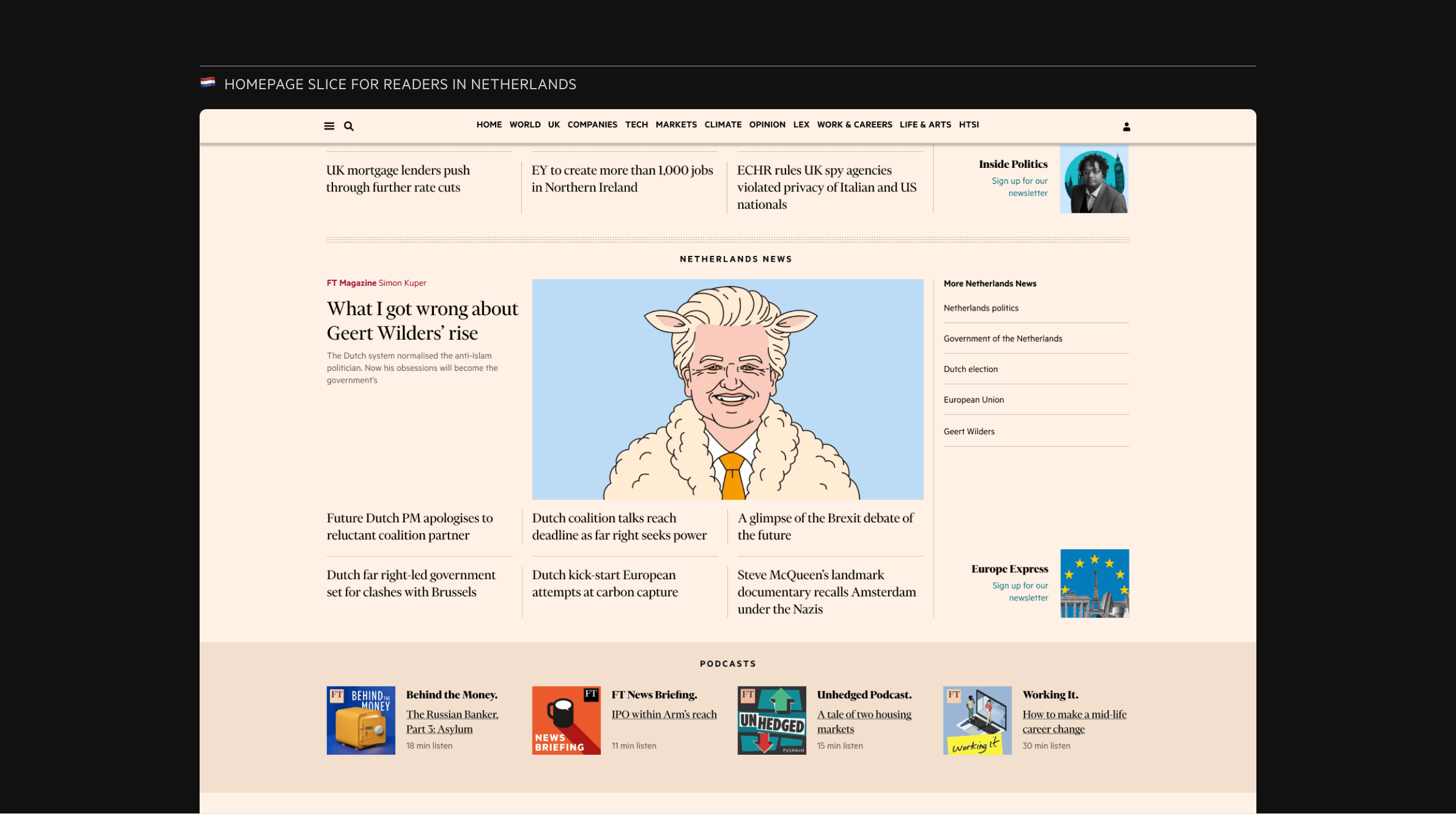






Result
More engagement and a deeper understanding
- Those who use 1 or more of the features are 20% more likely to become ‘engaged’.
- Those who arrive on the improved article page are 5% more likely to follow a topic.
- In/out bias was most effective in encouraging the under-engaged to follow a topic
Methods
Data Anaysis
Surveys
Personas
Ideation Workshops
User Flows
Wireframes
Advanced Prototyping
UX/UI
AB testing
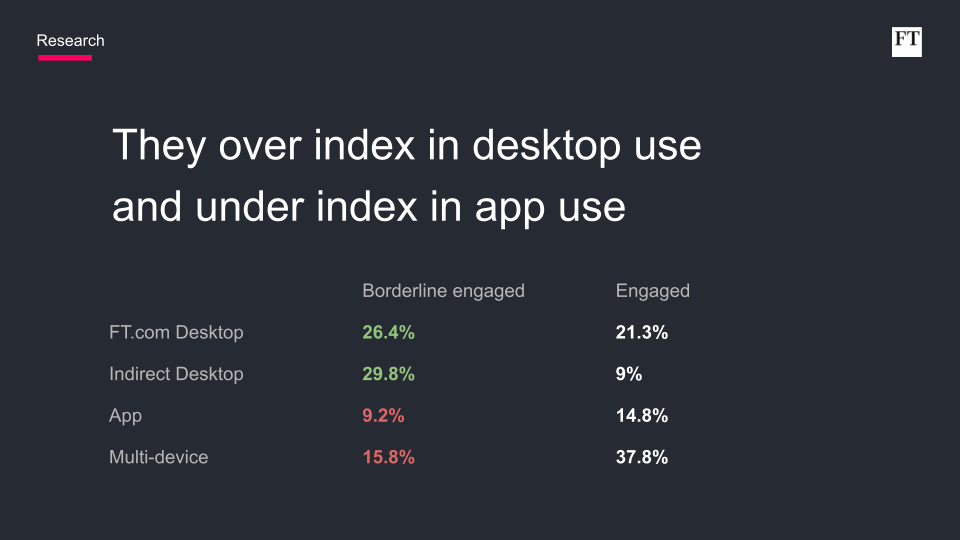
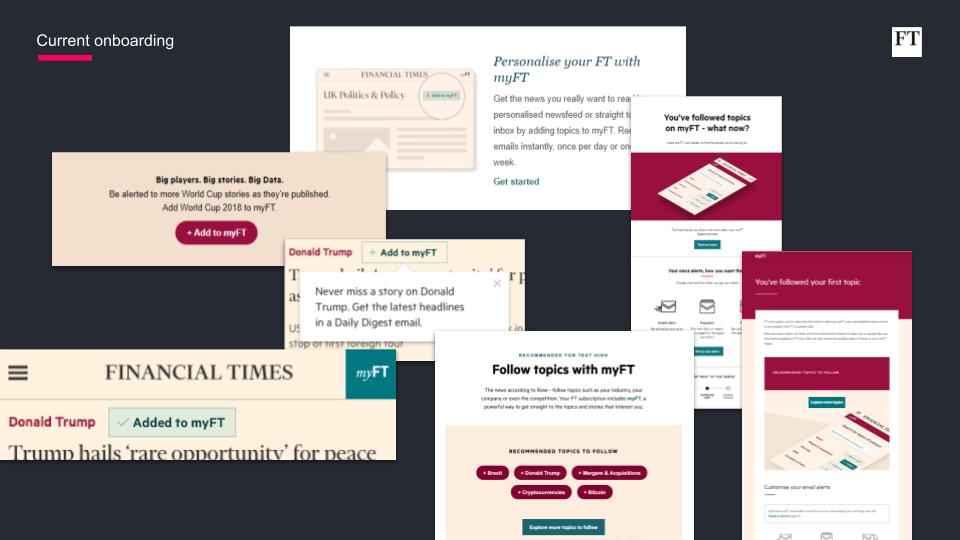
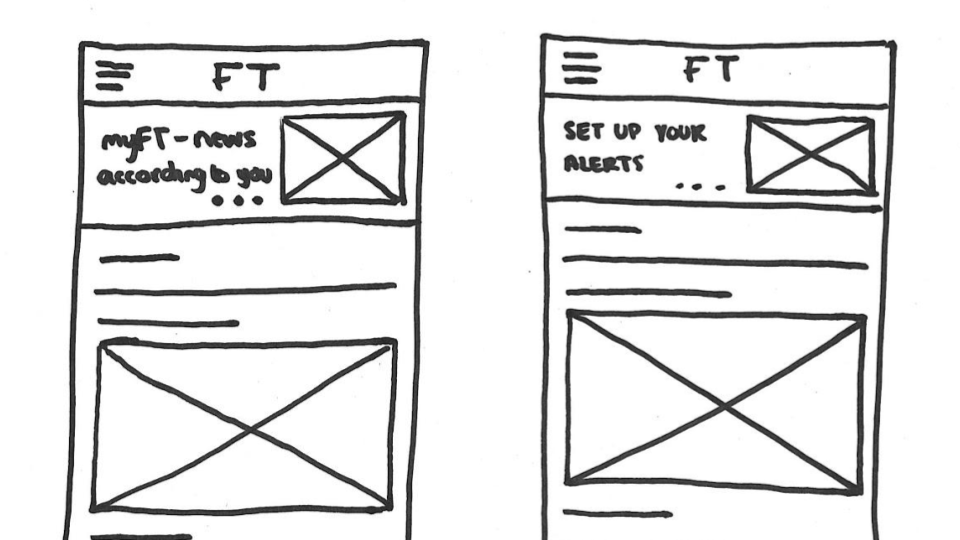
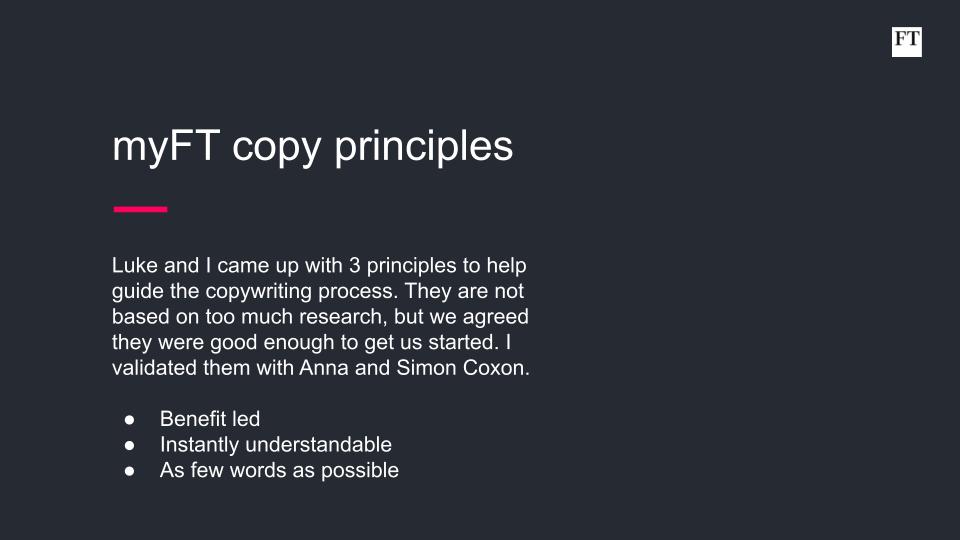


Next Steps
Following this work, we revisited and audited the language used for myFT, with the ambition of making it more understandable and action oriented.
We shared our findings with marketing teams so they could experiment with their messaging targeted at disengaged users.Read NextUsing audio to help governing bodies investigate war crimes
We shared our findings with marketing teams so they could experiment with their messaging targeted at disengaged users.Read Next